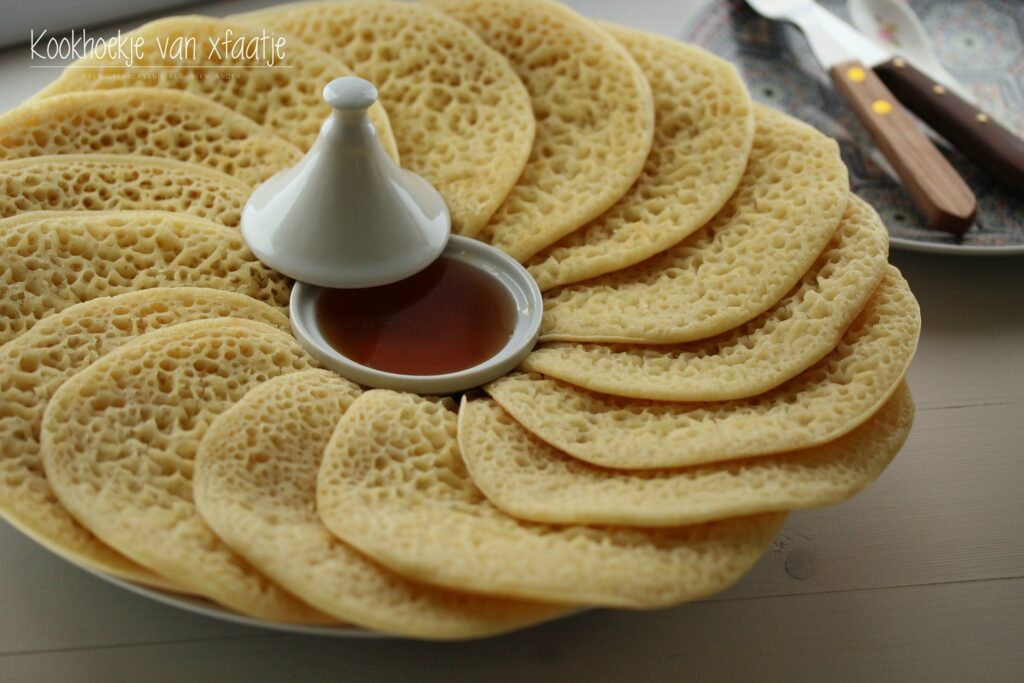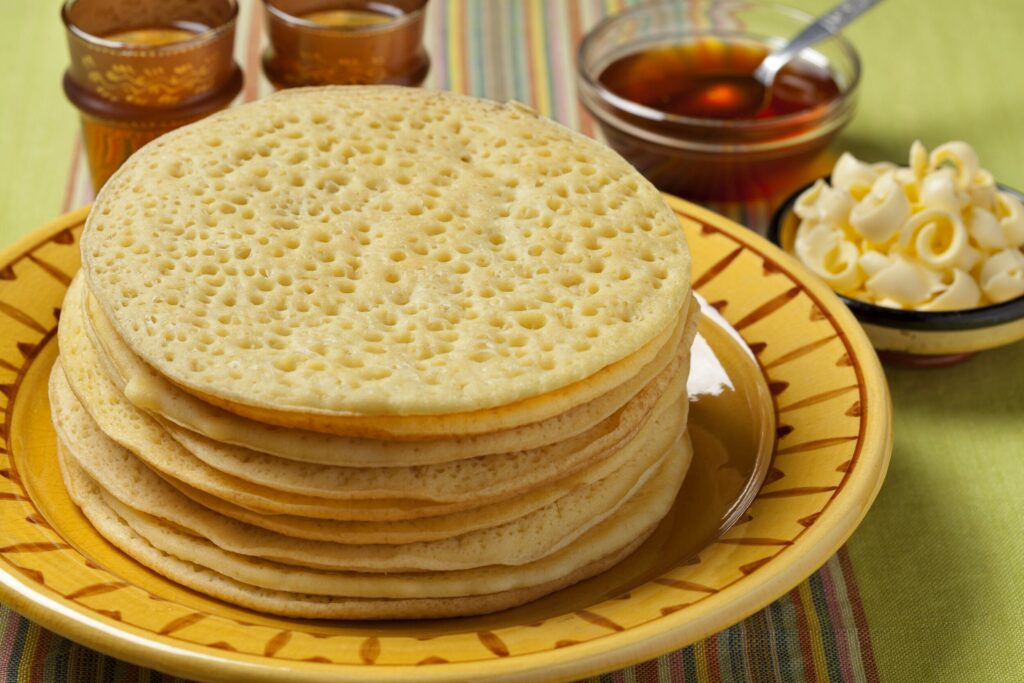Soft, spongy, and dotted with a hundred tiny holes, Baghrir—Moroccan pancakes—are a feast for both the eyes and the palate. Whether you’re an experienced cook eager to explore Moroccan cuisine or a foodie curious about unique global dishes, Baghrir is worth adding to your culinary repertoire.
These pancakes are beloved in Moroccan households, often served during Ramadan or shared among friends and family at special occasions. But Baghrir is more than just a dish; it’s a symbol of hospitality and community, showcasing the heart of Moroccan culture.
In this blog, we’ll uncover what makes Baghrir unique, its rich history, step-by-step instructions to make it at home, and tips for getting the perfect lace-like texture every time.

What Makes Baghrir Unique?
Baghrir stands out because of its distinctive appearance and texture. Known as “thousand-hole pancakes,” their surface is covered in delicate, honeycomb-like holes. The secret lies in the ingredients—fine semolina flour and yeast—which give it a light, airy texture.
But it’s not just the texture that sets Baghrir apart. They’re traditionally served drenched in a luscious butter-and-honey sauce, creating a melt-in-your-mouth experience. Their versatility makes them ideal for both sweet and savory pairings.
The History and Cultural Significance of Baghrir

Baghrir isn’t just food; it’s a tradition. This beloved dish has been part of Moroccan culture for centuries, enjoyed across regions with unique local twists. Whether served plain at rural breakfast tables or alongside feasting platters during celebrations in urban areas, Baghrir is a staple.
During Ramadan, Baghrir takes center stage as families break their fast around a communal table. Picture this—after a long day of fasting, relatives gather, eagerly tearing pieces of Baghrir, dipping them into honey, and enjoying the comfort of tradition.
I’ll never forget my visit to a bustling Moroccan market, where I spotted a stall selling fresh Baghrir. Watching the vendors expertly cook these pancakes over griddles, the air filled with the aroma of semolina and honey, was an unforgettable experience of Moroccan hospitality in action.
How to Make Baghrir at Home

Creating Baghrir at home is easier than you might think. Here’s a step-by-step guide to capturing their unique texture and flavor.
Ingredients:
- 1 ½ cups fine semolina flour (for the signature holes)
- ½ cup all-purpose flour
- 1 tbsp active dry yeast (for fermentation and holes)
- ½ tsp baking powder
- 2 cups warm water (just warm enough to activate the yeast)
- ¼ tsp salt
- Butter and honey for serving
Instructions:
- Activate the Yeast
-
-
- Dissolve the yeast in warm water with a sprinkle of sugar. Allow it to sit for 5-10 minutes until it foams. This step is critical for creating those signature holes.
-
- Mix the Ingredients
-
-
- Combine the semolina, all-purpose flour, salt, and baking powder in a mixing bowl. Add the activated yeast mixture and blend until smooth. A blender works best for achieving a lump-free, pourable batter.
-
- Rest the Batter
-
-
- Cover the bowl with a cloth and leave the batter to rest in a warm place for 30 minutes. This allows the batter to ferment and ensures your pancakes are light and airy.
-
- Cook the Pancakes
-
-
- Heat a non-stick pan over medium heat. Pour a ladleful of batter into the pan, forming a circle. Cook until the surface is covered with holes and the pancake is set (about 2 minutes). Do not flip—Baghrir is cooked on one side only.
-
- Serve
-
- Warm butter and honey together in a small saucepan, then drizzle over the pancakes before serving. Now, savor the spongy delight!
Tips and Tricks for Perfect Baghrir Every Time
To get that perfect “thousand-hole” texture, follow these tips:
- Use Fine Semolina Flour: Avoid coarse semolina, which can result in a gritty texture.
- Consistency is Key: The batter should be smooth and slightly runny, resembling heavy cream.
- Heat Matters: Ensure your pan is not too hot, or the pancakes may cook unevenly and lack their signature holes. A consistent medium heat works best.
- Don’t Flip: Cooking Baghrir on one side only preserves their spongy texture.
- Fermentation Time: Resting the batter is non-negotiable; it allows the yeast to create air pockets.
Variations and Serving Suggestions
Baghrir adapts well to different tastes. Here are a few variations to try:
- Spicy: Add a pinch of cinnamon or cardamom to the batter for a warm, aromatic twist.
- Savory: Pair Baghrir with soft cheeses, olives, or harissa for an unconventional yet delightful take on these pancakes.
- Nutty Delight: Sprinkle crushed almonds, pistachios, or sesame seeds over the honey-butter glaze for added crunch.
Baghrir shines on special occasions, but it’s equally wonderful as a daily treat paired with Moroccan mint tea. Invite friends over and serve them a plate of these pancakes for an instant connection to Moroccan hospitality.
Bring Morocco to Your Table
There’s something magical about a dish that connects people, traditions, and flavors. Baghrir achieves this effortlessly, from Ramadan family feasts to morning breakfast spreads. Its unique texture, rich history, and versatility make it a must-try recipe for anyone curious about Moroccan cuisine.
Ready to try this taste of Morocco? Follow the recipe above to create your own thousand-hole pancakes, and don’t forget to share them with loved ones—they’re even better when enjoyed together.
If you’re looking for more culinary inspiration or tips for perfecting your pancake-making skills, check out our in-depth courses on Moroccan cooking. Join the community and bring a world of flavor to your table.
By Jobhijra

